Results 10,101 to 10,110 of 12091
Thread: Anandtech News
-
12-03-19, 11:25 AM #10101
Anandtech: Acer Launches Rugged Chromebook Spin 311: An 11.6-Inch AMD A4-Based 2-in-1
Acer has started sales of its new rugged convertible Chromebook laptop for corporate and educational markets. The Chromebook Spin 311 brings together a low price tag, sturdy design, and a 10-hour battery life.
Acer’s Chromebook Spin 311 R721T comes equipped with a Corning Gorilla Glass-protected 11.6-inch multitouch IPS LCD with a 1366x768 resolution. The 2-in-1 has rather thick bezels, which makes the laptop noticeably bulkier. Being an inexpensive AMD-powered Chromebook, the PC is based on AMD’s entry-level A4-9120C APU, which uses a dual-core Excavator module running at 1.8 GHz and the GCN 1.2-based Radeon R4 integrated GPU with 2 CUs operating at 720 MHz. The system has 4 GB of DDR4 RAM and 32 GB of NAND flash storage.
Moving on, wired and wireless connectivity available for the Chromebook Spin 311 R721T is typcial for today’s machines. The list includes Wi-Fi 5, Bluetooth 4.1, two USB 3.1 Gen 1 Type-A ports, two USB 3.1 Gen 1 Type-C ports (with DP support), and a microSD card reader. Meanwhile, the absence of GbE will be a strong disadvantage for those who rely on wired networks. On the multimedia side of matters, the convertible notebook has a webcam, stereo speakers, a microphone array, and a 3.5-mm audio jack for headsets.
The Chromebook Spin 311 is made of thick plastic and features a design that can withstand drops from 122 cm and a drainage mechanism that can protect internal hardware if up to 342.5 ml of liquid is spilled on the computer. According to Acer, the Spin 311 has been tested to survive 59% - 88% humidity, temperatures between -32ºC and +49ºC, and vibrations of up to 7.7 G per axis. Rugged design has it price though: the laptop is 23.5 mm thick and weighs 1.5 kilograms, which is quite heavy for an 11.6-inch machine.
At present, Acer’s Chromebook Spin 311 R72T is available from select Japanese retailers as well as from Amazon UK. The latter sells it for £198.99, so it is reasonable to expect the unit's US MSRP to be around $200.Acer Chromebook Spin 311 Component R721T APU AMD A4-9120C
1.6-2.4 GHz, 1MB L2 cache
6-W TDP
Radeon R4 GraphicsRAM 4 GBl DDR4 Storage 32 GB eMMC Display 11.6-inch 1366x768 IPS LCD Dimensions 296 x 206 x 23.5 mm Weight 1.5 Kg Connectivity Wi-Fi 5 (802.11ac)
Bluetooth 4.1Battery 4,200 mAh Li-Poly, up to 10 hours
45 W USB-C ChargerPorts 2 x USB 3.1 Gen 1 Type-A
2 x USB 3.1 Gen 1 Type-C
microSD Reader
Headset jackOther Webcam, speakers, microphone array Starting Price ~$200 (not confirmed)
Related Reading:
- Acer at CES: AMD Powered Acer Chromebook 315 Announced
- HP at CES 2019: HP Chromebook 14 Combines AMD and Chrome OS
- Acer Announces The Rugged Chromebook 11 N7: Designed For Education
- The ASUS Chromebook Flip C434: A Convertible Chromebook with Premium Features
- Acer Announces Chromebook Tab 10: A Tablet Running Google’s Chrome OS
Sources: Acer, PC Watch, Business DN’A
More...
-
12-03-19, 02:51 PM #10102
Anandtech: Qualcomm Snapdragon Tech Summit Live Blog: Day One
Today is the start of Qualcomm's three-day annual Snapdragon Tech Summit. Day one historically is where Qualcomm goes into detail about how the company is performing, and this year will be particularly important with respect to how 5G deployment has progressed, ready for next generation 5G devices, which we're also going to start to hear about. I'm sat here in the front row, and the event will start shortly.
More...
-
12-03-19, 02:51 PM #10103
Anandtech: Amazon Announces Graviton2 SoC Along With New AWS Instances: 64-Core Arm W
We only recently reported on the story that Amazon are designing a custom server SoC based on Arm’s Neoverse N1 CPU platforms, only for Amazon to now officially announce the new Graviton2 processor as well as AWS instances based on the new hardware.
The new Graviton2 SoC is a custom design by Amazon’s own in-house silicon design teams and is a successor to the first-generation Graviton chip. The new chip quadruples the core count from 16 cores to 64 cores and employs Arm’s newest Neoverse N1 cores. Amazon is using the highest performance configuration available, with 1MB L2 caches per core, with all 64 cores connected by a mesh fabric supporting 2TB/s aggregate bandwidth as well as integrating 32MB of L3 cache.
Amazon claims the new Graviton2 chip is can deliver up to 7x higher performance than the first generation based A1 instances in total across all cores, up to 2x the performance per core, and delivers memory access speed of up to 5x compared to its predecessor. The chip comes in at a massive 30B transistors on a 7nm manufacturing node - if Amazon is using similar high density libraries to mobile chips (they have no reason to use HPC libraries), then I estimate the chip to fall around 300-350mm² if I was forced to put out a figure.
The memory subsystem of the new chip is supported by 8 DDR4-3200 channels with support for hardware AES256 memory encryption. Peripherals of the system are supported by 64 PCIe4 lanes.
Powered by the new generation processor, Amazon also detailed its new 6th generation instances M6g, R6g and C6g, offering various configuration up to the full 64 cores of the chip and up to 512GB of RAM for the memory optimised instance variants. 25Gbps “enhanced networking” connectivity, as well as 18Gbps bandwidth to EBS (Elastic Block Storage).
Amazon is also making some very impressive benchmark comparisons against its fifth-generation instances, supporting Intel Xeon Platinum 8175 processor of up to 2.5GHz:
Amazon is making M6g instances with the new Graviton2 processor available for CPU for non-production workloads, with expected wider rollout in 2020.
- All of these performance enhancements come together to give these new instances a significant performance benefit over the 5th generation (M5, C5, R5) of EC2 instances. Our initial benchmarks show the following per-vCPU performance improvements over the M5 instances:
? - SPECjvm® 2008: +43% (estimated)
- SPEC CPU® 2017 integer: +44% (estimated)
- SPEC CPU 2017 floating point: +24% (estimated)
- HTTPS load balancing with Nginx: +24%
- Memcached: +43% performance, at lower latency
- X.264 video encoding: +26%
- EDA simulation with Cadence Xcellium: +54%
The announcement is a big win for Amazon and especially for Arm’s endeavours in the server space as they try to surpass the value that the x86 incumbents are able to offer. Amazon describes that the new 6g instances are able to offer 40% higher performance/$ than the existing x86 5th generation platforms, which represents some drastic cost savings for the company and its customers.
Related Reading:- AWS Designing a 32-Core Arm Neoverse N1 CPU for Cloud Servers
- Arm Announces Neoverse N1 & E1 Platforms & CPUs: Enabling A Huge Jump In Infrastructure Performance
- GIGABYTE's Cavium ThunderX2 Systems: 1U R181-T90 and 2U R281-T91
- Assessing Cavium's ThunderX2: The Arm Server Dream Realized At Last
- GIGABYTE's ThunderXStation with Dual Cavium ThunderX2 Arm SoCs
- Investigating Cavium's ThunderX: The First Arm Server SoC With Ambition
- Marvell Completes Acquisition of Cavium, Gets CPU, Networking & Security Assets
- Amazon AWS Offers Another AMD EPYC-Powered Instance: T3a
- Amazon Offers More EPYC: M5ad & R5ad Instances
More...
- All of these performance enhancements come together to give these new instances a significant performance benefit over the 5th generation (M5, C5, R5) of EC2 instances. Our initial benchmarks show the following per-vCPU performance improvements over the M5 instances:
-
12-03-19, 05:49 PM #10104
Anandtech: GELID Unveils SubZero M.2 XL: A DIY Cooling System for M.2-22110 SSDs
GELID has introduced a rather unusual product: an aftermarket heatsink designed for SSDs that use the server/workstation-oriented M.2-22110 form-factor. The SubZero M.2 XL aluminum heatsink is shipped with two thermal pads as well as silicon fixtures and is designed to keep these drives from overheating and and performing more consistently under high loads
The majority of client SSDs these days use an M.2-2280 form-factor, as this is the largest drive that most desktops and virtually all notebooks can accommodate. By contrast, M.2-22110 drives are somewhat more common for server/workstation-grade drives, as those systems have more space and there's a need for features such as power loss protection. Nonetheless, there's still some overlap with enthusiast-class desktop boards, which can include an M.2-22110 slot or two just in case.
At present, the best-known client M.2-22110 SSD is Intel’s Optane 905P M.2, which uses 3D XPoint memory and is among the highest performing drives available today. Not so coincidentally, the Optane 905P M.2 is also known for thermal throttling under high loads if the drive is left bare. So for 905Ps that didn't come with a heatsink, GELID’s SubZero M.2 XL fills a specific niche.
GELID’s SubZero M.2 XL heatsinks are available in black and red for an MSRP of $10/€9.GELID's SubZero XL for M.2-22110 SSDs HS-M2-SSD-20 Heatsink Dimensions 100 ? 20 ? 3 mm Heatsink Material Aluminum Thermal Pad Thickness 0.5 & 1 mm Thermal Pad Conductivity 12 W/mK Thermal Pad Hardness 35 Shore Weight 45 grams Bundle Heatsink x1
Thermal Pad x2
Fixtures x3
Related Reading:
- EKWB Begins Selling Heatsink for Intel’s Optane 905P M.2 SSD
- The Enterpise TLC Storage Era Begins: Rounding Up 13 SSDs With Samsung, Intel, and Memblaze
- Intel Expands Optane 905P SSDs To 1.5TB
Source: GELID
More...
-
12-03-19, 05:49 PM #10105
Anandtech: Quick Bytes: Qualcomm on 5G Deployment Status
It has been hard to avoid the concept of 5G, and for this year and last year, Qualcomm has used its Snapdragon Tech Summit to showcase where they are for deployment, and what areas are next. In this year’s presentation, Qualcomm stated that there are 40+ operators with some form of 5G enablement globally, and 325+ further operators in 109 countries investing in future 5G deployments.
They most talked about areas with some form of 5G are notably Korea, Switzerland, areas of China, and areas of the US. Other countries, like Germany, the UK, Spain, South Africa, Australia, and some of the Middle East, currently have some patchy deployment in major cities are but are looking to expand. In 2020, Qualcomm expects another 14 countries to be 5G enabled, and by 2021 another 30+. Qualcomm also has stated that they expect 2.8 billion (with a b) 5G connections/devices by 2025. It is worth noting that this number isn’t just smartphones, but smart devices and IoT, which will ramp up as the cost of 5G decreases.
The key aspect to this is that 5G is often talked about in terms of two standards: Millimeter Wave (mmWave) and Sub 6 GHz. Sub 6 GHz is the lower frequency standard that trades range for speed, but can be deployed at current 4G sites, whereas mmWave uses higher frequency that enables higher speeds, but requires adding additional sites to complete coverage. In countries with advanced 4G deployments (LAA), those ‘additional sites’, known as densification to enable capacity, already helps mmWave. This is why some countries are Sub 6 GHz first, while others are mmWave first. Qualcomm’s main messaging today about 5G deployment is that 5G is not one or the other: 5G includes both mmWave and 5G, and Qualcomm wants all of its future hardware to support both.
For example, the USA is the main country that went with mmWave first in 2019. In 2020, Russia and Japan will also start with mmWave. Almost everywhere else is going with Sub 6 GHz deployments first. The first country with both deployed at a wide scale is expected to be South Korea in 2020, with USA having both in certain cities, and then by 2021+ that is expected to expand to areas of Australia, UK, Brazil, Chile, Germany and Italy.
Other features of 5G include Dynamic Spectrum Sharing, or DSS. DSS will be a key part of enabling 5G at current 4G sites, using the same spectrum for both 5G standards and 4G standards such that both types of devices can work in the same spectrum. This means that operators do not need to rearchitect their deployments to split the spectrum, and Qualcomm is expecting some key markets (USA, Europe, China, Korea, Australia) to support DSS in 2020.
When it comes to chipsets, all of Qualcomm’s 2020 smartphone platforms will support both mmWave and Sub 6 GHz, along with DSS support. It will be up to the device manufacturer to actually put the relevant antennas in, however.
Quick Bytes are shortened news pieces about topics mentioned at large press events. Because sometimes smaller announcements get buried at a keynote presentation because a dozen key points are mentioned in one article, and our Quick Bytes series separates out a few topics for targeted discussion.
More...
-
12-03-19, 08:13 PM #10106
Anandtech: Qualcomm Goes For The Mid-Range: Snapdragon 765 and 765G
The first day of Qualcomm’s annual Snapdragon Tech Summit is often the teaser day: a slow entry into the rest of the event where the technical aspects of the announcements are disclosed. What the teaser day does is often give us the names of Qualcomm’s future products, and today we have that – one of the announcements was the name of the Snapdragon 765 and 765G chips, with an integrated 5G modem on the silicon. We’ll get more details about the hardware tomorrow, but there’s a few things today that have been disclosed and are worth covering.
Qualcomm’s 700-series chips are often targeted more at the mid-upper smartphone market: where the 800-series goes into the flagships, the 700 covers the slightly cheaper devices that are more price sensitive but with most of the same features. This year the Snapdragon 765 and 765G are set to offer a slightly cut down version of the new Snapdragon 865 (also announced today, with more details tomorrow), but it differs in one key aspect in the fact that it has an integrated 5G modem.
While Qualcomm has the X55 external modem for the high performance parts, Qualcomm has integrated what it calls the ‘X52’ 5G modem platform into the 765 and 765G. This modem is still quite powerful according to Qualcomm’s statements: up to 3.7 Gbps download speeds, support for mmWave, Sub 6 GHz, Dynamic Spectrum Sharing, NSA, SA, and carrier aggregation. As the modem is on the same silicon as the core, it helps with integration, ensuring that every 765 device will always have a 5G modem, and can also help with power management as well.
For both mmWave and Sub 6 GHz support in the phone, it will require the OEM to decide to add in the correct antenna placement, although Sub 6 GHz and LTE use the same RF front-end, so we expect that only mmWave support would be OEM decided. Qualcomm has designed these chips to be ‘global’ and support as much of the current and future 5G infrastructure as possible.
Technically Qualcomm didn’t really give any more details than that. However, we did notice that for a split second that they did show this slide during the presentation, perhaps in error, at time stamp 46m14:
Here we see that the 765 and 765G will have a Qualcomm Spectra 355 ISP, an Adreno 620 GPU, and a Hexagon 696 DSP. None of these we’ve heard of before, and so are new and the specification are unknown (apparently the Adreno 620 popped up online as part of an unannounced Snapdragon 735 part), so capabilities are a question mark. The difference between 765 amd 765G also hasn’t been disclosed yet, and that ‘G’ doesn’t mean 5G, as both chips have the modem inside.
So ultimately this SoC is going to be pushing 5G connectivity into the hands of more people who can’t afford flagships, but still want a high-end phone. We are getting more details about the chip tomorrow during the technical presentations.
More...
-
12-04-19, 07:41 AM #10107
Anandtech: NAND Flash Revenue Peaks in Q3 Amid Production Cuts & Outages
Despite cuts in wafer starts by almost all NAND producers, and even disruptions in Kioxia (former Toshiba Memory) and Western Digital's fab operations, analysts estimate that bit shipments of NAND increased in the third quarter. Luckily for manufacturers, so did demand, which helped to keep the actual average selling price of NAND between between flat and -10%, depending on the manufacturer.
Avid readers know that as flash manufacturers transition to higher-density 3D NAND flash architectures with more layers and/or more bits per cell, they inevitably increase the total number of bits shipped. This in turn creates memory oversupply (in terms of bits) and intense price declines. To avoid those price declines, manufacturers have been cutting down wafer starts at their fabs, as well as slowing down capacity expansions and further ramping up existing fabs. These decisions did not particularly help NAND manufacturers keep per-bit prices at their desired levels back in the third quarter, but they will likely have an effect in the future. Only SK Hynix reduced its bit shipments – by a mere 1% – which may as well be flat.
Meanwhile, other companies increased their bit shipments as demand for memory grew in Q3, with the largest consumers of NAND flash — such as Apple and Samsung Mobile — preparing for the holiday sales spike. At the same time, ASPs of NAND flash decreased by 5% to 10%, according to TrendForce, a division of DRAMeXchange. The slow down in capacity expansion will eventually have an effect on ASPs, but only time will till how exactly this will work out.NAND Business in Q3 2019
Source: TrendForceSamsung SK Hynix Kioxia Western Digital Micron Intel Bit Growth +10% -1% +20% +9% +10% +50% ASP Trend -5% +4% -5% flat -5% -10%
Now, let’s take a look at the numbers in more detail.Sales Rankings of NAND Flash Makers
Source: TrendForceRevenue
(in million USD)Market Share Q3 2019 QoQ Growth Q3 2019 Q2 2019 Samsung $3,987.2 5.9% 33.5% 34.9% Kioxia $2.226.7 14.3% 18.7% 18.1% Western Digital $1,632.0 8.4% 13.7% 14.0% Micron $1,530.0 4.7% 12.9% 13.5% Intel $1,290.0 37.2% 10.9% 8.7% SK Hynix $1,145.7 3.5% 9.6% 10.3% Others $77.5 30.4% 0.7% 0.6%
Samsung
Samsung retained its position as the global No. 1 supplier of NAND, which is not surprising given the company’s strong positions on SSD and smartphone markets. With a 33.5% market share and a 10% growth in bit shipments, Samsung is well ahead of its rivals.
Kioxia & Western Digital
Kioxia and Western Digital suffered the power outage in the Yokkaichi province of Japan back in June. But despite the loss in production, both companies posted a strong bit growth of 9% and 20% respectively. Interestingly, Kioxia even increased its market share to 18.1%, whereas Western Digital's share declined to 13.7%.
Micron
With a 12.9% market share, Micron posted a 10% increase in bit shipments; revenue however fell 5%.
Intel
Focused primarily on enterprise-grade SSDs, Intel was, perhaps, the biggest winner in the third quarter, based on the numbers provided by TrendForce. With a 50% increase in bit shipments amid a 10% drop in ASP, the company is selling a whole lot of NAND – albeit at lower prices.
SK Hynix
SK Hynix is the only company that saw its bit shipments decline in Q3. Overall, SK Hynix commanded 9.6% of the NAND market in Q3.
Summing Up
With further advances in 3D NAND memory manufacturing, bit oversupply is something that is hard to avoid, so we're expecting to see ASPs per bit to decrease going forward. Which means both costs and selling prices will continue to fall. And while this translates decently well into lower prices for retail SSDs and flash memory cards, unfortunately, this isn't likely to translate to big gains for consumers of smartphones and pre-built systems. Big OEMs have been hesitant to increase the amount of NAND available in their handsets, especially entry-level SKUs, so we've seen the amount of NAND available in these SKUs (and their prices) stay pretty static over the last couple of years.
Meanwhile, one thing that we have to keep an eye on is the ‘Others’ position in the table above. Today, this includes Chinese YMTC and some specialty players that command all of 0.7% of 3D NAND sales globally. To a degree, TrendForce’s data hints that YMTC has yet to ramp up its 3D NAND manufacturing lines, but given was production capacities at its disposal, it seems like it's only a matter of time until the company can capture a meaningful share of the NAND market.
Related Reading:
- Western Digital: Nearly All NAND Capacities Resumed Normal Operations
- SK Hynix NAND Update: 3D NAND Output Cut, Slowdown Capacity Expansions
- Toshiba & WD NAND Production Hit By Power Outage: 6 Exabytes Lost
- Micron: Shipments of 3D QLC for SSDs Nearly Double QoQ as Wafer Starts Cut Again
- Intel Memory Plans: No New NAND Capacity, Wants to Move 3D XPoint Production to China
- Boom to Bust: Memory Makers Plan to Cut NAND Flash Production
Source: TrendForce
More...
-
12-04-19, 10:58 AM #10108
Anandtech: Intel Unveils Specificiations of NUC Element Modular PCs
In preparation to kick off sales of its NUC Element modular computers, Intel has disclosed some additional details about the product family. As expected, Intel will offer NUC Element boards, chassis, and pre-assembled modules designed to fit into both Intel and third-party enclosures.
Intel’s NUC Elements is the company’s new modular PC initiative aimed to simplify system-level design while enabling OEMs to build ultra-compact desktop computers. NUC Elements modules are based on Intel’s U-series Core, Celeron, or Pentium Gold processors with TDPs up to 15 Watts. The modules come with 4 GB or 8 GB of soldered-down dual-channel DRAM, up to 64 GB of eMMC solid-state storage on select SKUs, and Wi-Fi 5 + Bluetooth 5.0 via Intel's Wireless-AC 9560 radio.
Each NUC 8 Compute Element uses a card-edge consolidated connector for power and I/O, with the connector offering USB 3.1/2.0, DisplayPort/HDMI, eDP, GbE, PCIe, HD audio, and an eSPI interface. OEMs and chassis vendors can then mix and match these as they please, including handing off additional peripherals via PCI and USB bridges.
The NUC Elements family will altogether include seven NUC 8 Compute Element ‘Chandler Bay’ modules. Intel, in turn, will offer two boards for the modules to plug into: the "rugged" ‘Austin Beach’ (CMB1BB) board, and the pro-focused ‘Butler Beach’ (CMA1BB) board.
Finally, Intel will be offering four two chassis as well, which they will be selling as part of board + chassis kits to customers who are in essence looking a turnkey solution. These kits will all be based around the Austin Beach board, with a version of the chassis for each of the two variations of Austin Beach.
Intel’s NUC Elements are qualified to work for 24/7 and come with a three-year warranty. Pricing depends on actual configuration and other factors.
Related Reading:
- The Modular PC: Intel’s new Element brings Project Christine to Life
- Intel Launches the NUC Compute Element for Modular Computing Systems
- Intel Confirms Comet Lake-Based NUC 10 ‘Frost Canyon’ UCFF PCs
- EGlobal's NUC-Like PC Packs Intel’s Unlocked Hex-Core i7-8750HK CPU
Source: Intel
More...
-
12-04-19, 10:58 AM #10109
Anandtech: Quick Bytes: Qualcomm’s Prediction of 1.4 Billion 5G Smartphones by 2022
I wanted to cover a quick comment that Qualcomm made yesterday at its Snapdragon Tech Summit event. We’re currently in 2019, with the first wave of 5G devices currently rolling out. The devices are here, and the networks on a global scale are taking their time to add 5G in different stages – some are starting with mmWave, some are starting with Sub-6 GHz, and then eventually everyone everywhere should support both. There is always a question about what the level of adoption is like, and Qualcomm gave a very clear figure about where the market is headed.
Now it’s fairly obvious that as time goes on, as 5G gets cheaper and the operators actually give data plans that make sense, that more and more users will invest in 5G enabled devices. That will drive certain use cases that will eventually make certain forms of 5G a fundamental feature for smartphones, just like 4G is today. Of the devices out in the market that support 5G, due to the limited chipset/modem support, we’re dealing mostly with flagship smartphones: the Samsung Galaxy S 10 5G, the Oppo Reno 5G, the OnePlus 7 Pro 5G, the LG V50 ThinQ 5G, and so on. It’s a high cost of entry, and part of the announcement this week from Qualcomm is that they’re going to be introducing 5G into more mid-range chips to enable mid-range devices.
As part of that drive to take 5G to the mass market, Qualcomm stated on stage that they expect more than 1.4 billion smartphones (that’s smartphones, not 5G-enabled IoT devices) with 5G to be shipped by 2022.
At the moment, the biggest market for 5G adoption is South Korea. Qualcomm has stated in an interview with us that there are 2 million 5G subscribers in South Korea, and Samsung has stated in September that they had passed that 2 million mark and they expect 4 million by the end of 2019. Samsung is the only smartphone provider with a ‘mid-range’ 5G implementation right now, the Galaxy A90 5G, which starts around $620.
In order to go from 2 million to 4 million to 1.4 billion is going to require a wide adoption of Qualcomm’s new mid-range 5G-enabled chipsets. To that end, Qualcomm announced the Snapdragon 765 and 765G, which will power upper-mid range smartphones in 2020. The SoCs will have integrated X52 modems that will offer support for both mmWave and Sub 6 GHz 5G (assuming the OEMs add the antennas). In order to go to 1.4 billion, it’s going to require more than just Qualcomm to bring 5G to the mid-range, and in an interview earlier this year with Richard Yu, he stated that they are also ready to bring 5G to the mid-range in 2020.
In order to provide some context and to see if this number is viable, I looked back at the data for 4G/LTE adoption. It’s worth noting that the 1.4 billion number for 5G that Qualcomm presented is for ‘smartphones’, not ‘phones’ – there are a large number of 4G non-smart phones that are sold every year.
(Editor's note: This information is from Statista, which only discloses the underlying data sources to Pro subscribers. Normally Statista data is questionable if you don't have the original source, however we were able to find media reports with similar numbers for specific years.)Smartphone Unit Shipments AnandTech 4G
Year4G
Shipments4G
Sum5G
Year5G
SumYear 1 2010 4m 4m 2019 4m Year 2 2011 18m 22m 2020 - Year 3 2012 95m 117m 2021 - Year 4 2013 273m 390m 2022 1400m ? Year 5 2014 542m 932m 2023 - Year 6 2015 967m 1899m 2024 - Year 7 2016 1206m 3109m 2025 -
The title of the first 4G smartphone (albeit WiMAX rather than LTE) is usually attributed to the HTC Evo 4G, which came out in June 2010. By the end of 2010, there were 4 million 4G smartphone shipments, and it took 6 years to reach a sum of 1.4 billion. So in order for the market to hit that 1.4 billion number within 4 years of 5G devices coming to market (2019-2022), they’re going to have to beat the rate of 4G adoption by a significant factor.
That being said, the device market is a lot more mature. Both Qualcomm and Huawei are saying that consumers looking for a new phone will want a 5G future-proof device from next year, and this will drive sales. I have confidence in companies like Qualcomm and the OEMs to push out plenty of 5G devices, though I remain skeptical about infrastructure rollout.
Qualcomm has stated that they have 150 designs with 5G already, although not all of those are smartphones. In the presentation today, they said 230+ were either deployed or in development.
Quick Bytes are shortened news pieces about topics mentioned at large press events. Because sometimes smaller announcements get buried at a keynote presentation because a dozen key points are mentioned in one article, and our Quick Bytes series separates out a few topics for targeted discussion.
More...
-
12-04-19, 02:39 PM #10110
Anandtech: Supermicro Shows Off Intel Nervana NNP-T Servers: 8-Way PCIe and OAM
One of the key elements to deep learning and training is lots of very dense compute, as well as the dense servers to go through the computation. Intel’s Nervana NNP-T Spring Crest silicon, which we saw at Hot Chips earlier this year, is the ‘big training silicon’ that came out of the acquisition with Nervana: a 680 mm2 built on TSMC 16nm with CoWoS with four stacks of HBM2. The servers using this silicon are now starting to appear, and we caught sight of two at the Supermicro booth at Supercomputing.
More...
Thread Information
Users Browsing this Thread
There are currently 21 users browsing this thread. (0 members and 21 guests)




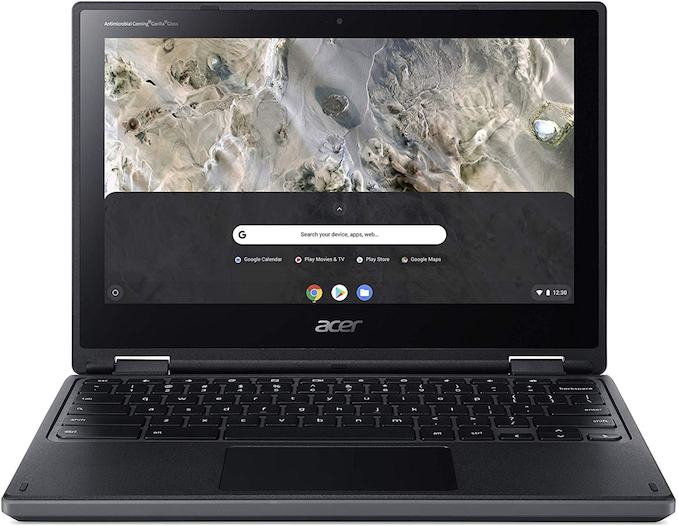
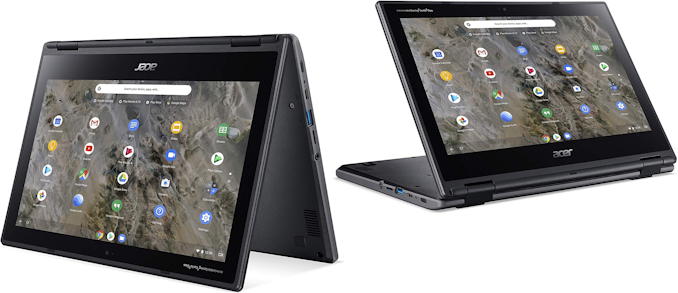


 Quote
Quote
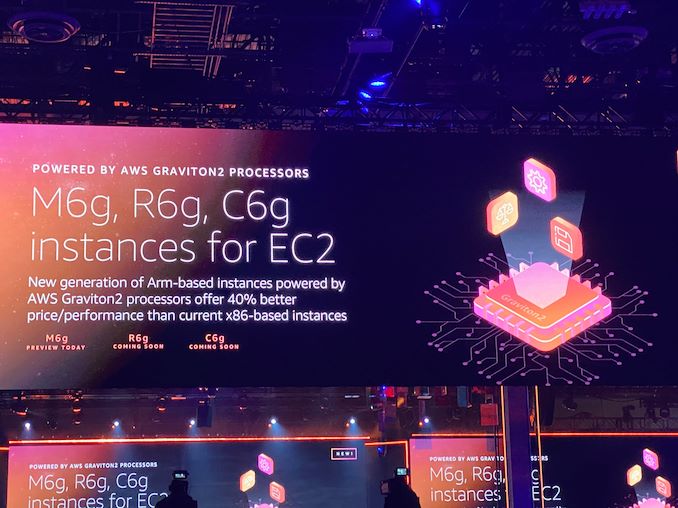
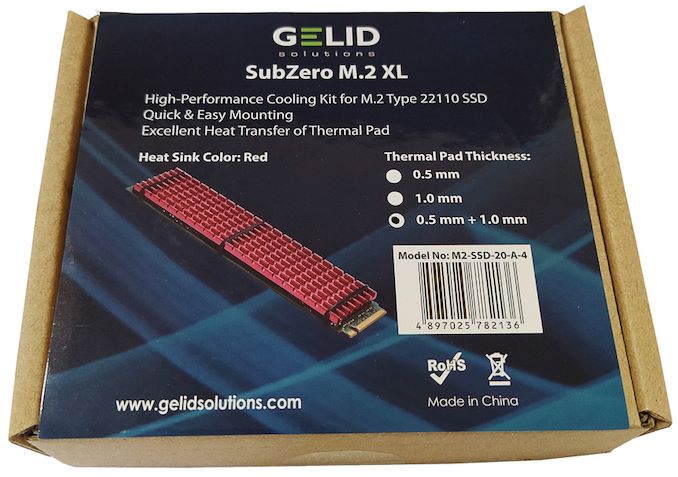
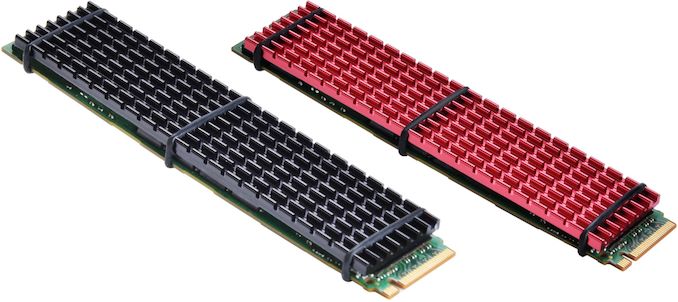
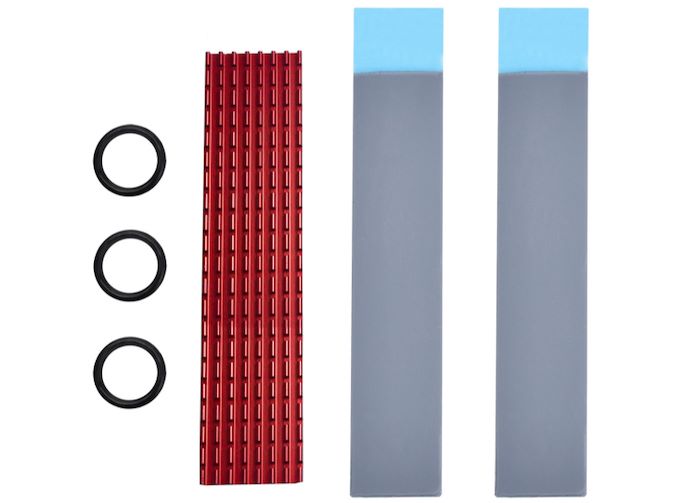
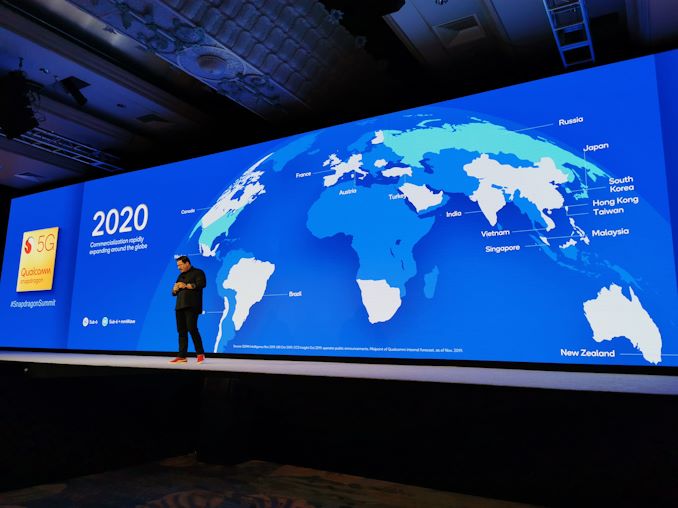
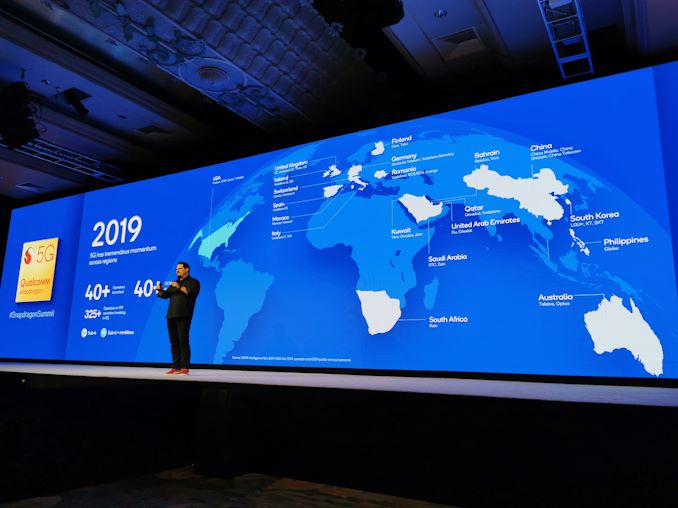

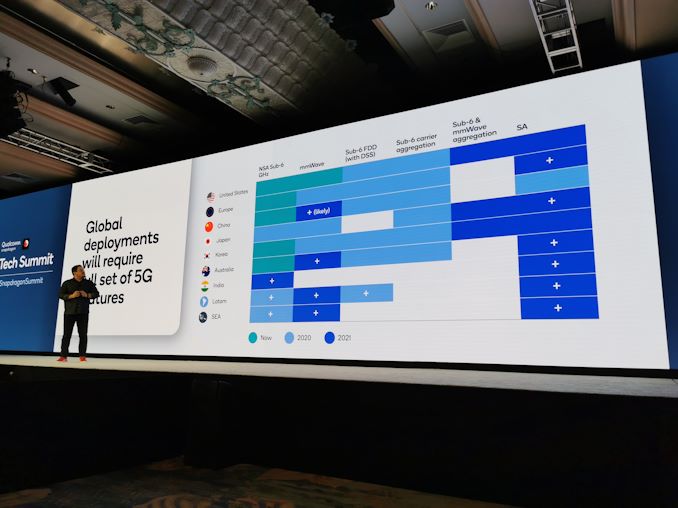
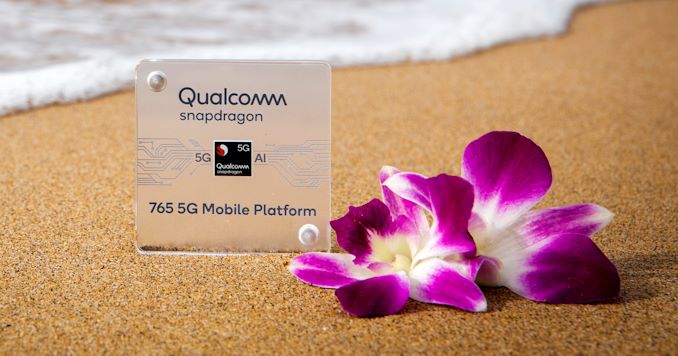

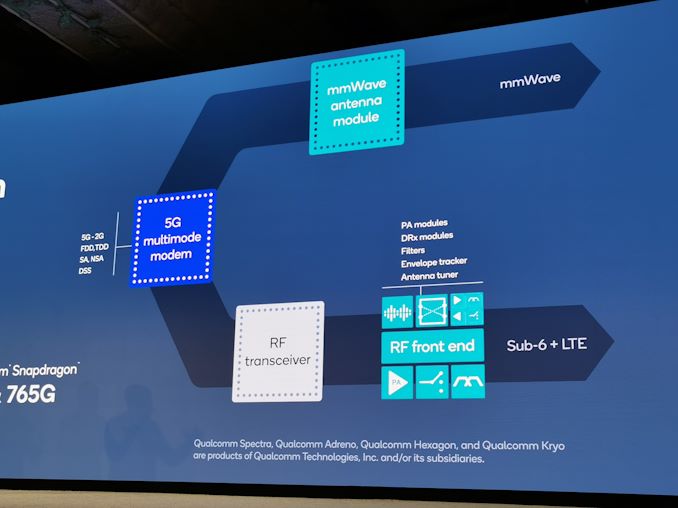
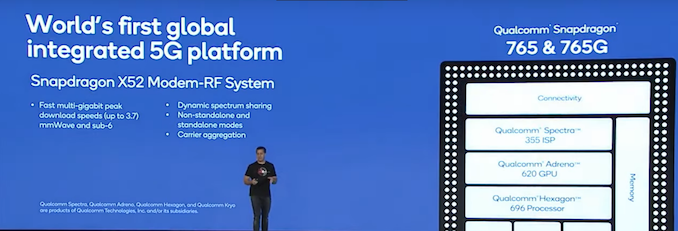
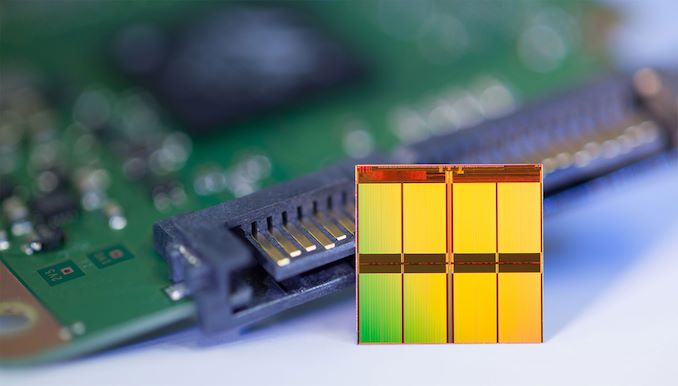
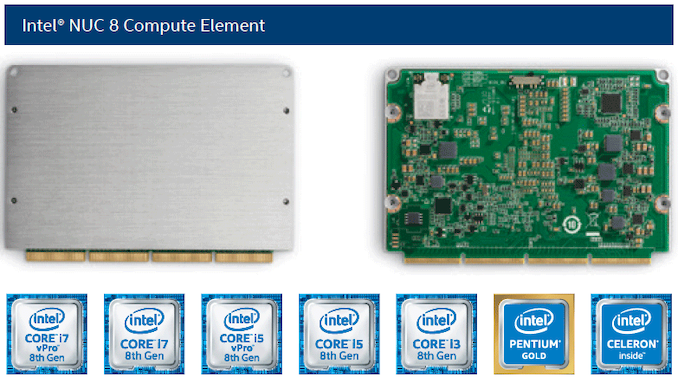
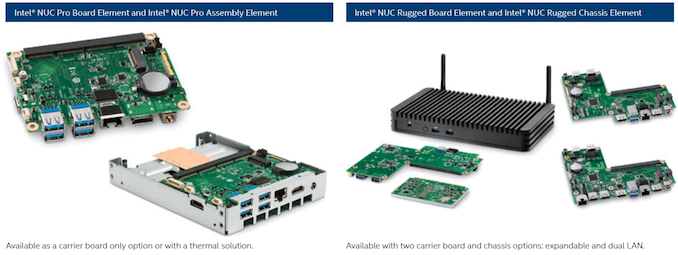
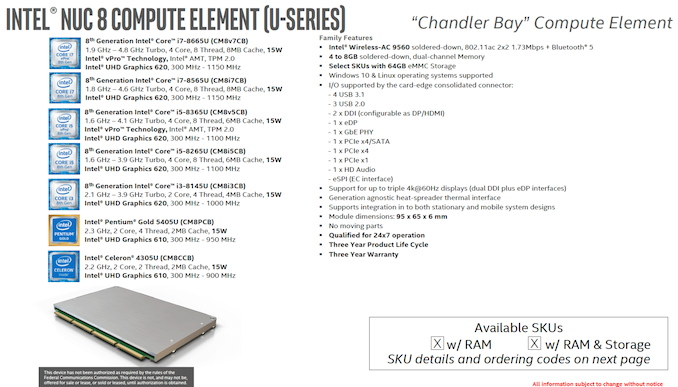
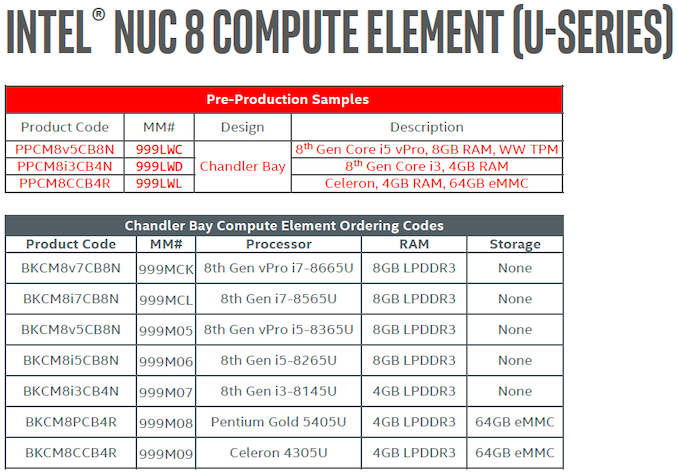
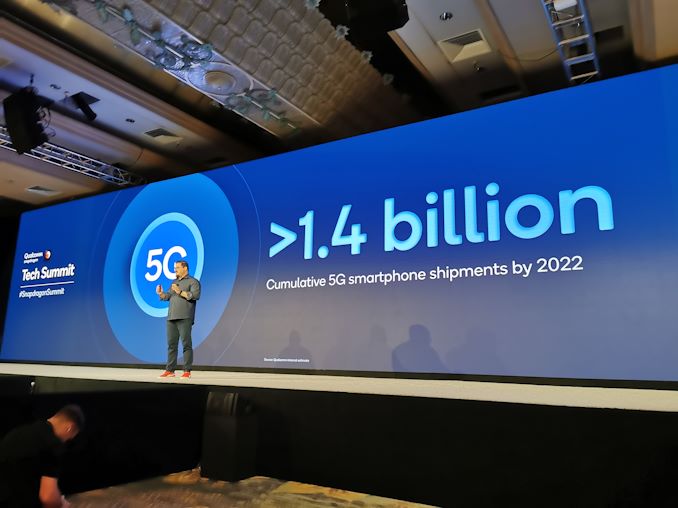

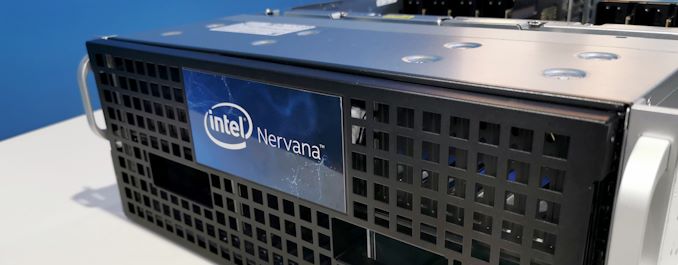
















Bookmarks